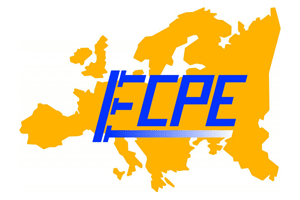The following tutorial is planned for Friday 8 September 2023 in the afternoon:
(Provisional Programme)
TUTORIAL N° 13
Afternoon
(14:00 – 17:30)
Room: 1.08 Tunnelen
Multi-sampling control of power electronic converters
- Frede BLAABJERG, Aalborg University, Denmark
- Shan HE, Aalborg University, Denmark
- Paolo MATTAVELLI, University of Padova, Italy
- Ivan PETRIC, University of Padova, Italy
Increasing the integration of renewables has been regarded as a critical pathway to de-carbonize the power system. As a bridge between the renewables and the power grid, power electronic converters are of importance to achieve efficient and reliable power conversion. Digital control is the most commonly used technology in power electronic converters due to its flexibility and adaptability. Nevertheless, for the regular single/double-sampling PWM-based control, significant control delay is introduced in the control loop. This control delay affects the achievable control bandwidth, stability margins, and overall dynamic performance.
With the gradually decreasing cost of high-performance microprocessors, multi-sampling control is a potential candidate to overcome the above-mentioned limitations. It relies on sampling the state variable and updating the duty cycle command multiple times within one switching period. As the control delays are inversely proportional to the sampling rate, multi-sampled control can enable dynamic performance close to the one obtained with analog control, for high-enough sampling rate. As a result, multi-sampling has been widely used to improve the control bandwidth of power electronic converters, including dc–ac converters, dc–dc converters, and motor drives. A particularly attractive and emerging application for multi-sampling PWM is within grid-connected converters. Due to delay reduction, multi-sampling PWM can inherently bring the required damping and help passivize the converter impedance in a wide frequency range, thus enabling robust stability.
Besides the average value, the switching ripple is always introduced in the control loop when using multi-sampling, which is the main difference compared to the regular sampling. This brings a set of nonlinearities caused by the vertical crossings between the carrier and the modulating signal. Some effects that may consequentially arise and that must be handled are multiple-switching, pulse-skipping, gain-reduction, and limit-cycle oscillations (jittering). Moreover, aliasing issues may appear. This all motivates the design of suitable digital filters needed to suppress or completely remove the arising nonlinear effects.
To fully utilize the benefits of multi-sampling in a practical application, the objectives of this tutorial will include multi-sampled PWM modeling, non-linearity analysis, ripple filter design, noise attenuation capabilities, and passivity-based multi-sampled control of grid-connected VSCs.
Tutorial 13: INFORMATION FILE





